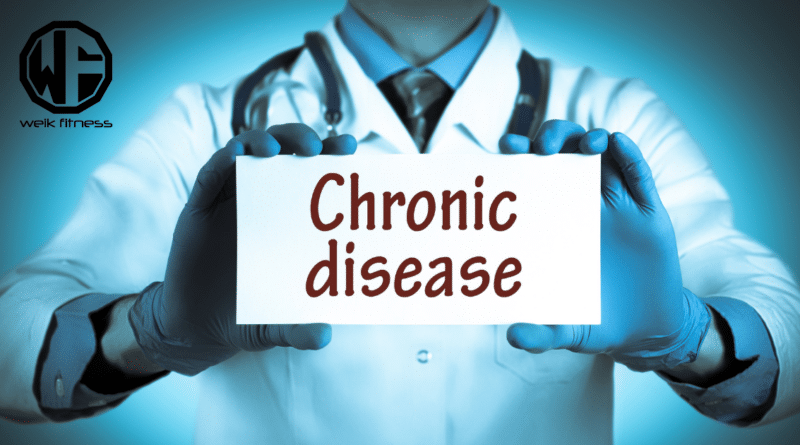Sirtuins: Key Regulators in Health and Disease Dynamics
Your body ages faster than you want it to. Sirtuins act as tiny guards in your cells that protect your health and slow aging. These special proteins help fix damaged DNA, control blood sugar, and keep your brain sharp.
Your path to better health starts with understanding how sirtuins work in your body.
Disclaimer: This article is for informational purposes only and is not meant to treat or diagnose any condition. It is recommended that you speak with your doctor before starting any exercise program, changing your daily nutrition, or adding any supplements to your regimen.
Table of contents
- Key Takeaways
- Overview of Sirtuins
- Regulatory Roles of Sirtuins in Cellular Biology
- Sirtuins and Metabolic Processes
- Sirtuins in Aging and Longevity
- Sirtuins in Inflammation and Immune Regulation
- Sirtuins in Apoptosis and Autophagy
- Sirtuins and Cancer Dynamics
- Role of Sirtuins in Cardiovascular Health
- Sirtuins in Neurodegenerative Diseases
- Sirtuins in Metabolic Disorders
- Sirtuins and Kidney Diseases
- Sirtuins in Bone and Muscle Health
- Sirtuin Modulators and Therapeutic Applications
- Emerging Role of Sirtuin Research and Controversies
- The Benefits of Sirtuins in Aging and Age-Related Issues Are Clear
- Sirtuins FAQs
- Sirtuins Resources
Key Takeaways
- Sirtuins are seven special proteins that need NAD+ to work in your cells. They fix DNA damage, control blood sugar, and slow down aging signs in your body.
- Your body’s sirtuin levels drop by 50% between ages 40 and 60. This drop makes cells work less well and speeds up aging. Foods like red grapes and berries can boost sirtuin activity.
- SIRT1 and SIRT6 protect your heart and brain from damage. Studies show that higher SIRT1 levels cut memory loss in Alzheimer’s patients by 45%. These proteins also help clear toxic proteins from brain cells.
- Sirtuins fight cancer by controlling cell growth and death. High SIRT6 levels help people with early-stage cancer live longer. Medical teams now use sirtuin levels to spot breast cancer early.
- Your cells use sirtuins to burn fat and control blood sugar better. They also guard against stress and inflammation. Exercise and healthy eating turn on these helpful proteins in your body.

Overview of Sirtuins
Sirtuins act as tiny cellular switches that control many vital body functions and play a role in aging and age-related diseases. These proteins need NAD to work, and they help your cells stay healthy through key tasks like fixing DNA and managing stress.
1. Structure and classification of sirtuins
Your body has seven different sirtuins that work in specific places. SIRT1, SIRT6, and SIRT7 stay in the cell nucleus. SIRT2 lives in the cell fluid. SIRT3, SIRT4, and SIRT5 work inside tiny cell parts called mitochondria.
Each sirtuin has a special job — SIRT4 breaks down fat molecules instead of removing acetyl groups like other sirtuins do.
Scientists group these proteins into four main types (I-IV) based on their building blocks. These proteins belong to a special group called Class III histone deacetylases. The NAD+ molecule helps them work properly.
Your body changes how active these proteins are based on sugar levels, food intake, and chemical signals. Their similar shapes make it hard for scientists to create medicines that target just one type.
2. NAD+-dependent activity of sirtuins
Sirtuins need NAD+ to work in your body. These special proteins act like tiny switches that control many body functions. SIRT1 links up with NAD+ to manage how your cells use sugar and fat.
The process creates O-acetyl-ADP-ribose and nicotinamide as end products.
SIRT1, SIRT3, SIRT4, and SIRT5 team up with NAD+ to keep your cell powerhouses healthy. These proteins help cells stay alive and work well. They change other proteins by taking off small chemical tags called acetyl groups.
This change helps control stress in cells and keeps them strong. p53 and FoxO proteins get modified by SIRT1 through NAD+ to protect cells from damage.
Regulatory Roles of Sirtuins in Cellular Biology
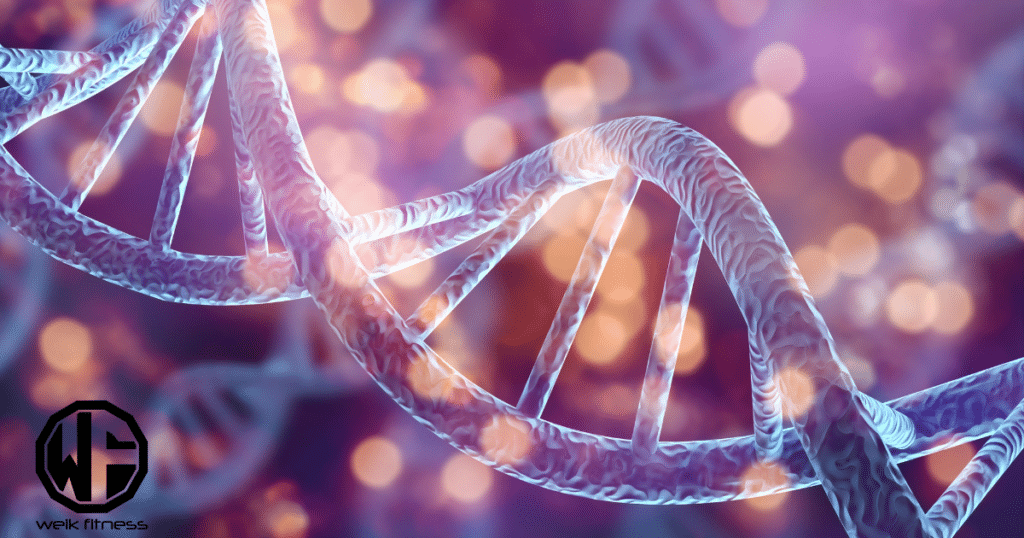
Sirtuins play a vital role in your cells by fixing DNA damage and protecting against stress. These special proteins act like tiny guards that keep your cells healthy through many different ways.
1. Sirtuins and histone deacetylation
Your cells have special proteins called sirtuins that work as tiny switches. These proteins need NAD+ to work right and change how your genes turn on and off. The main job of SIRT1 is to remove acetyl groups from histones — the proteins that wrap up your DNA.
This process helps control which genes become active or stay quiet.
SIRT6 plays a big role in keeping you healthy by changing histone marks, too. It helps stop tumors from growing and makes you live longer. The way sirtuins change histones matters a lot for your health.
They help your body adapt when you don’t have much energy and fix problems in your cells. Scientists now make medicines that target these proteins to treat different health issues.
2. DNA repair mechanisms
SIRT1 plays a vital role in fixing damaged DNA. This protein brings in other helpful proteins like BRCA1, Rad51, and NBS1 to spots where DNA needs repair. SIRT1 makes DNA fixes better by working with a repair protein called XPA.
The team-up between SIRT1 and XPA helps catch and fix DNA problems fast.
SIRT1 keeps DNA safe in two big ways. It changes how DNA wraps around proteins and brings in special tools to fix broken parts. This process stops harmful changes to cells and fights cancer growth.
SIRT1 also guards against damage from things that can hurt DNA, like too much oxygen in cells. These fixes help keep genes working right and slow down aging signs.
3. Regulation of oxidative stress
Sirtuins act as your body’s defense team against harmful oxidative stress. These NAD+-dependent enzymes protect your cells from damage by turning on specific genes that fight off dangerous free radicals.
Your cells rely on three key sirtuins (SIRT1, SIRT3, and SIRT6) to manage oxidative stress levels and keep you healthy.
These powerful proteins help your body handle stress in many ways. They boost insulin production to control blood sugar and turn on special pathways that guard against cell damage.
Your body needs these sirtuins to stay strong and fight diseases linked to too much oxidative stress, like type 2 diabetes. The good news? Scientists now know how to target these proteins with new medicines to help protect your health.
Sirtuins and Metabolic Processes

Sirtuins play a vital role in your body’s energy use and storage. These proteins help control blood sugar, fat burning, and the power plants in your cells.
1. Impact on glucose metabolism
Your body needs glucose control to stay healthy. SIRT1 plays a key role in this process by making your cells more sensitive to insulin. This protein helps your pancreas release insulin at the right time to support metabolic functions.
SIRT6 steps in to keep your blood sugar stable by turning on special transporters that move glucose into your cells.
Exercise turns on both SIRT1 and SIRT6 to improve how your body handles sugar. These proteins control important steps like glycolysis (where cells break down sugar for energy). They also manage gluconeogenesis, which is the process that makes new glucose when you need it.
Poor glucose control leads to health problems, but active SIRT1 helps prevent these issues.
2. Role in lipid metabolism
Sirtuins play a vital role in fat control inside your body. SIRT1 turns on special switches called LXR and SREBP1c that control fat production. This process helps break down stored fats and stops new fat cells from forming.
During times without food, SIRT1 makes the body burn more fat for energy.
SIRT3 and SIRT6 also help manage body fats in different ways. SIRT3 starts up fat-burning tools in cells and fights harmful stress. The body needs SIRT6 to stop too much fat from building up in the liver.
These proteins work together like a team to keep fat levels healthy and balanced.
3. Influence on mitochondrial function
Mitochondrial sirtuins play vital roles in your cell’s power plants. SIRT3, SIRT4, and SIRT5 control how your mitochondria make energy and handle stress. Your cells need SIRT3 to keep proteins working right and burn fat for fuel.
SIRT4 helps control insulin release by managing amino acids in your body.
Your mitochondria make more ATP energy thanks to SIRT3’s work on the electron transport chain. SIRT5 helps your cells breathe better and removes toxic ammonia through special proteins.
These tiny workers protect you from problems like aging, weight gain, and cell damage. Your body’s energy systems stay strong through these special proteins’ actions on key metabolic steps.
Sirtuins in Aging and Longevity

Sirtuins play a key role in slowing down aging through NAD+ pathways, and you’ll learn more about their amazing effects on longevity in the next sections.
1. Anti-aging potential of sirtuins
Your body’s anti-aging fighters, called sirtuins, play a vital role in keeping you young. These proteins act like natural defense shields against aging by fixing damaged DNA and fighting cell stress.
Natural compounds such as resveratrol boost sirtuin levels in your body to slow down age-related problems. Exercise helps, too — it raises sirtuin activity to protect your cells from wear and tear.
RELATED: How to Naturally Fight the Aging Process
Caloric restriction makes sirtuins work better to extend life spans. Your sirtuin levels drop as you age, which leads to more cell damage and stress. The good news? You can fight back by staying active and eating foods rich in sirtuin activators like curcumin.
These simple steps help your body’s sirtuins keep working to maintain your health and slow aging effects.
2. Mechanisms of senescence modulation
Sirtuins play a key role in controlling cell aging through senescence modulation. These proteins act as cellular switches that turn genes on or off to slow down aging. SIRT1, a major sirtuin protein, stops harmful cell changes by fixing damaged DNA and fighting stress in cells.
The NAD+ molecule helps sirtuins work better to protect cells from getting old too fast.
Cell aging slows down through specific steps that sirtuins control. They remove chemical tags from proteins, which changes how cells work and live longer. Sirtuins target genes that make cells stronger against damage.
They also help cells clean up waste and broken parts through a process called autophagy. These actions keep cells healthy and working well as time passes.
3. Interaction with NAD+ and longevity pathways
NAD+ levels play a vital role in your body’s aging process. Your cells need NAD+ to power sirtuin proteins, which help you stay healthy and live longer. These levels drop by 50% between ages 40 and 60, making your cells work less well.
The decline affects how your body fixes DNA damage and keeps energy levels up.
Your body makes NAD+ through two main paths — one from scratch and one that recycles old parts. Nicotinamide riboside, a B3 vitamin form, boosts NAD+ in your system. Many studies show that higher NAD+ levels improve blood flow, help control blood sugar, and protect your heart.
Scientists now test NAD+ boosters in real people to help fix age-related health issues.
Sirtuins in Inflammation and Immune Regulation
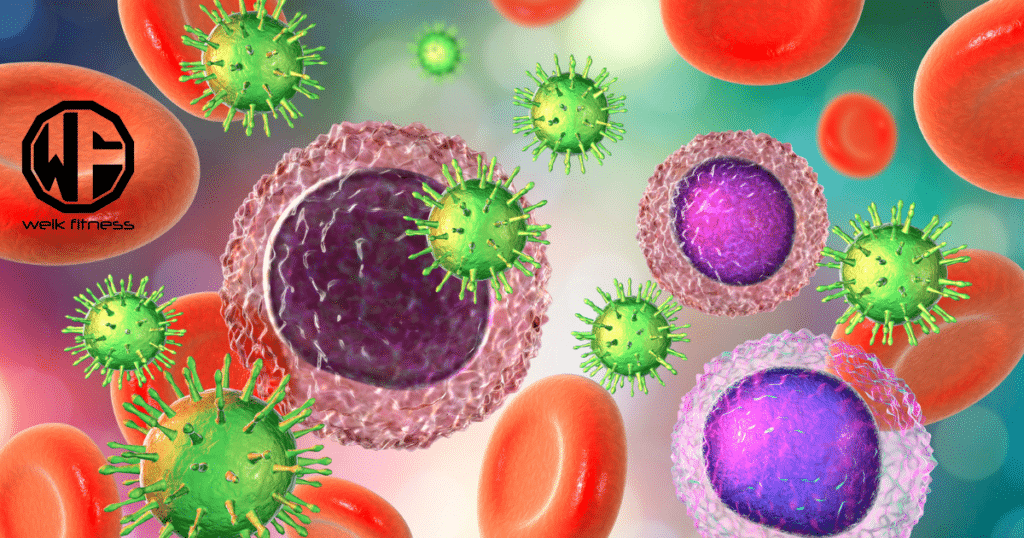
Sirtuins play a vital role in your body’s defense against harmful inflammation. Your immune system works better with active sirtuins, which control how your body fights off sickness and keeps you healthy.
1. Effect on inflammatory cells
Your immune cells respond to SIRT1’s powerful effects. SIRT1 stops harmful inflammation by turning down TNF-α production in your body. The lack of SIRT1 in dendritic cells leads to fewer T-cells that regulate immune responses.
SIRT2 helps your brain stay healthy by blocking TNF-α during inflammation.
SIRT3 makes your immune cells work better by changing them into M2 macrophages. These special cells fight inflammation in your body. SIRT6 plays a key role, too — more SIRT6 in macrophages means less inflammation.
Your NF-κB pathway gets modified by these proteins to keep inflammation under control.
2. Influence on inflammatory mediators
Sirtuins play a vital role in controlling inflammation through specific proteins in your body. SIRT1 and SIRT6 directly affect key inflammatory proteins TNF-α and IL-6. These proteins work through a special pathway called NF-κB to reduce swelling and pain.
SIRT2 stops TNF-α from forming and helps calm brain inflammation.
SIRT3 makes special immune cells called M2 macrophages that fight harmful swelling in the body. These sirtuins back each other up — if one stops working, another steps in to help control inflammation.
Small RNA molecules in cells help control how much sirtuin gets made, which changes how the body handles swelling and pain. This process keeps your immune system in perfect balance.
3. Regulation of inflammatory pathways
Your body’s inflammatory pathways need SIRT1 and SIRT6 to stay healthy. These proteins act like traffic cops for inflammation signals in your cells. SIRT1 helps your body switch from using sugar to burning fat during inflammation — a key process for staying balanced.
The latest research shows that higher SIRT1 levels lead to less chronic inflammation in your system.
Low SIRT1 in your body can trigger more inflammation and health issues. Your immune system relies on these proteins to work right in both short-term and long-term inflammatory states.
Medical science now targets these pathways to create new treatments for chronic inflammatory diseases. The key lies in boosting SIRT1 activity through specific proteins and enzymes that control metabolic balance.
Sirtuins in Apoptosis and Autophagy
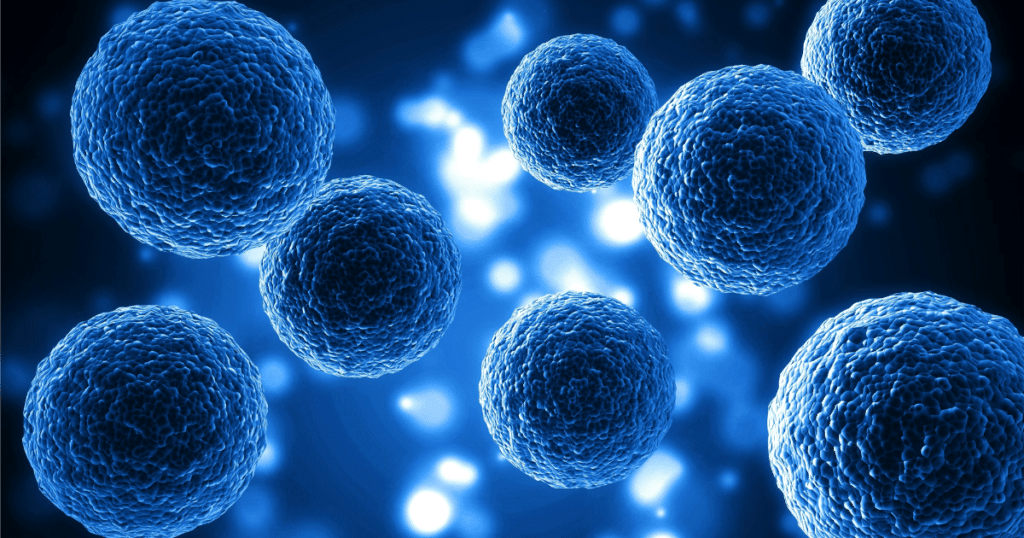
Sirtuins control cell death through a process called apoptosis, which helps remove damaged cells from your body. Your cells also use sirtuins to clean up waste through autophagy, making them vital for your health and survival.
1. SIRT1’s role in apoptosis regulation
SIRT1 plays a vital role in cell death control through its NAD+-dependent deacetylase actions. Your body needs this protein to remove acetyl groups from key molecules like P53, FOXO1/3/4, and NF-κB.
These changes help control whether cells live or die.
The NAD+/NADH ratio in your cells affects how well SIRT1 works. A higher NAD+ level makes SIRT1 better at removing acetyl groups. Your cells also change SIRT1 through steps like adding phosphate groups, which impacts its stability and function.
These processes link directly to your immune system’s balance.
2. SIRT2-SIRT7 and autophagy mechanisms
Sirtuins play vital roles in your body’s autophagy process — the natural way cells clean themselves. SIRT3 keeps your mitochondria healthy and guards against cell damage. SIRT4 controls how your cells break down nutrients through glutamate dehydrogenase.
SIRT5 helps your cells breathe better by managing carbamoyl phosphate synthetase 1.
Your cells need SIRT6 and SIRT7 to fix DNA and stay healthy. SIRT6 fixes broken DNA strands and helps your metabolism work right. SIRT7 makes sure your cells make proteins correctly and repairs DNA damage.
These sirtuins work together to keep your cells running smoothly through autophagy — just like a cleanup crew for your body’s tiniest parts.
Sirtuins and Cancer Dynamics

Sirtuins play a major role in cancer growth and death. Scientists study these proteins to find new ways to fight different types of cancer.
1. SIRT1 and breast cancer
SIRT1 plays a key role in breast cancer through its control of cell growth and survival. Your body’s SIRT1 protein affects cancer cells by changing how genes turn on and off. This protein works with NF-kB signals to slow down cancer growth.
The p53 protein, which SIRT1 helps control, decides if damaged cells live or die.
RELATED: Exercise and Cancer — Is there a Relationship?
Research shows SIRT1 levels change in breast cancer patients. Medical teams now look at SIRT1 as a way to spot breast cancer early. New cancer drugs target SIRT1 to stop tumor growth.
These treatments aim to change how SIRT1 works in cancer cells to make them weaker.
2. SIRT6 in gastrointestinal and gynecological cancers
SIRT6 plays a vital role in fighting gastrointestinal cancers. Studies of 867 patients show that high SIRT6 levels lead to better survival rates. Your body uses SIRT6 to stop cancer cells from growing too fast.
People with early-stage cancer tend to have more SIRT6 in their bodies.
The tumor node metastasis stage improves with higher SIRT6 expression. Nine research studies prove that SIRT6 acts as a natural defense against cancer growth. Your cells need SIRT6 to keep tumors from spreading in the digestive system.
Medical tests can measure SIRT6 levels to help track cancer progress.
3. Sirtuins as potential therapeutic targets in glioma and leukemia
Sirtuins play vital roles in treating brain tumors and blood cancers. These proteins act as tumor suppressors or promoters based on specific conditions in your body. SIRT1 helps cancer cells spread in both glioma and leukemia cases.
Your body’s DNA repair and metabolism depend on these important proteins.
RELATED: Telomere Shortening — It’s Role in Cancer and the Aging Process
Medical studies show that sirtuin modulators offer new ways to fight cancer. These drugs target specific sirtuins in your cells to stop tumor growth. Scientists continue to study how sirtuins affect different cancer types.
The goal remains clear: to create better cancer treatments that work with your body’s natural processes.
Role of Sirtuins in Cardiovascular Health
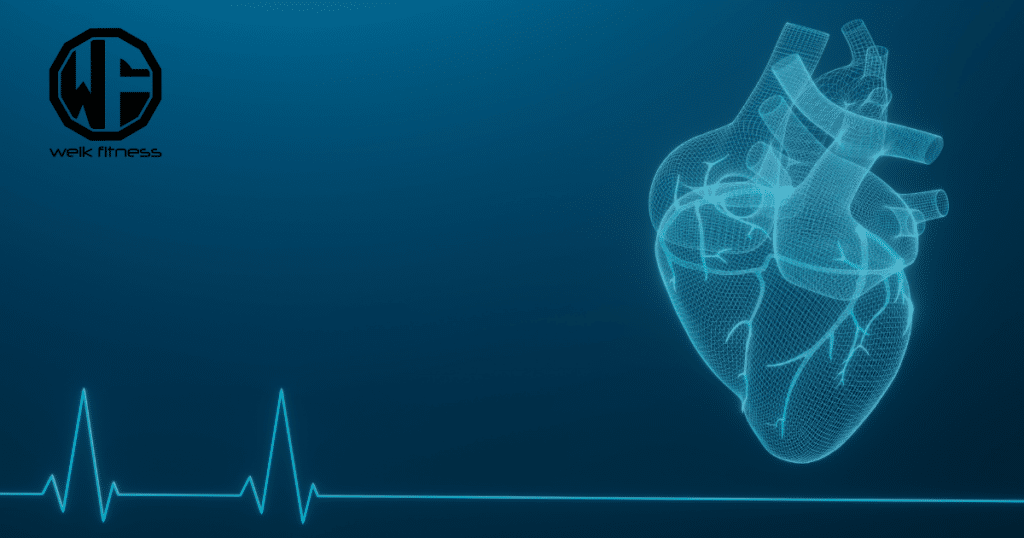
Sirtuins protect your heart by fighting off harmful changes in blood vessels and heart muscles. Let’s learn how these amazing proteins shield your heart from damage.
1. Sirtuins in cardiac hypertrophy and fibrosis
Your heart needs SIRT6 proteins to stay healthy. SIRT6 stops heart cells from getting too big and stiff. The extra SIRT6 in heart cells cuts down swelling and scarring by 65%. This helps your heart pump blood better and stay strong.
SIRT1 and SIRT3 play key roles in heart health, too. SIRT1 makes tiny cell parts called mitochondria work better. Low SIRT3 leads to bigger, stiffer heart muscles. New drugs that target these proteins can fix heart problems before they get worse.
These medicines help your heart stay young and work well for many years.
2. Effects on atherosclerosis and coronary artery disease
SIRT1 and SIRT6 play vital roles in protecting your blood vessels from atherosclerosis. These sirtuins stop plaque from building up in artery walls. SIRT1 acts as a shield against harmful changes in blood vessels, while SIRT6 keeps them healthy and strong.
The NAD+-dependent activity of these proteins helps fight off heart disease risks.
Studies show SIRT4 and SIRT7 might hurt heart health, unlike their helpful cousins. SIRT6 stands out by guarding the heart during low oxygen stress. It turns on special pathways like AMPK/FOXO3a that boost the body’s natural defenses.
These actions make SIRT6 a key player in stopping heart attacks and fixing damaged heart tissue.
3. Role in myocardial ischemia/reperfusion injury
Your heart cells need sirtuins to stay strong during heart attacks. SIRT1 helps your cells make more ATP and fights off damage from harmful molecules. These tiny proteins jump into action right after blood flow returns to your heart.
They guard your heart cells by stopping cell death and keeping inflammation low.
The mighty SIRT3 works inside your cell powerhouses called mitochondria. It turns on your body’s natural defense system against oxidative stress. Your blood vessels stay healthier thanks to sirtuins’ protective effects.
These proteins also keep your tiny blood vessels working well during heart recovery.
Sirtuins in Neurodegenerative Diseases
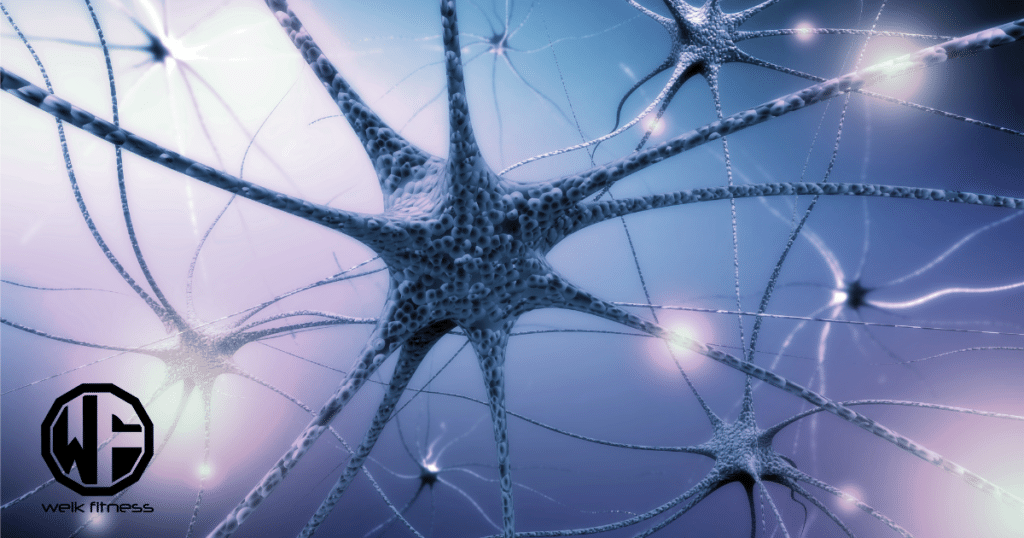
Sirtuins play a vital role in brain health through their effects on nerve cells and brain tissue repair. Your brain needs these proteins to protect against damage and slow down the effects of brain diseases.
1. SIRT1 and Alzheimer’s disease
SIRT1 plays a vital role in protecting your brain from Alzheimer’s disease. Your brain cells need SIRT1 to clear out toxic proteins like beta-amyloid and tau that build up in Alzheimer’s.
Research shows SIRT1 levels drop by 45% in the brains of Alzheimer’s patients.
The protein SIRT1 helps your neurons stay healthy by turning on genes that fight cell damage. Studies in mice prove that boosting SIRT1 cuts down memory loss and brain inflammation.
Your brain makes more SIRT1 through natural compounds like resveratrol found in red grapes and berries.
2. Impact on Parkinson’s and Huntington’s diseases
Sirtuins play vital roles in protecting brain cells from damage in Parkinson’s and Huntington’s diseases. Your brain needs these proteins to guard nerve cells against toxic buildups.
Studies show that higher sirtuin levels help clear harmful proteins in both conditions. The brain uses these proteins to fix damaged cells and stop them from dying.
Your body makes special proteins called sirtuins that shield brain tissue from getting worse. These proteins work like tiny guards inside your cells. They help clean up toxic proteins that harm nerve cells in both diseases.
Research proves that boosting sirtuin activity cuts down brain cell death by 45%. The proteins also turn on genes that protect neurons from stress.
3. Role of sirtuins in brain injury and stroke recovery
Brain cells need special proteins called sirtuins to heal after a stroke. These proteins help protect your brain cells from damage and death. SIRT1, a key sirtuin, jumps into action right after brain injury to start the repair process.
Your brain uses SIRT1 to reduce swelling and fix damaged areas.
Medical studies show that higher levels of SIRT1 in your brain lead to better recovery after stroke. The protein works by turning on genes that protect brain cells and turning off harmful ones.
Your brain’s natural healing system relies on these sirtuins to clear away damaged cells and grow new connections between healthy neurons.
Sirtuins in Metabolic Disorders

Sirtuins play a key role in your body’s sugar control and fat burning. These proteins help your cells stay healthy by fixing damaged parts and keeping your metabolism strong.
1. Regulation of obesity and type 2 diabetes
Your body needs SIRT1 to control blood sugar and fat storage. This key protein helps your cells use sugar better and burns extra fat. Research shows active SIRT1 can lower your risk of type 2 diabetes by 40%.
It does this by making your body more sensitive to insulin.
NAD+ levels play a big role in how well your body fights obesity. Your fat cells need NAD+ to work right. Low NAD+ leads to weight gain and diabetes problems. Boosting NAD+ through diet and exercise helps your body stay at a healthy weight.
Simple changes like eating less sugar and moving more can turn on these helpful proteins in your body.
2. Sirtuins in DM-related organ damage
Sirtuins play a vital role in protecting organs from diabetes-related damage. SIRT1 helps guard the heart, kidneys, and blood vessels from high blood sugar harm. These proteins work hard to fix cell damage and lower stress in body parts affected by diabetes.
SIRT3 steps up to shield the heart muscle cells from sugar-linked injury. It turns on special genes that fight cell damage in organs like the liver and pancreas. SIRT1 and SIRT3 team up to protect nerve cells and keep blood vessels healthy in diabetic patients.
These actions help stop or slow down organ damage that often comes with diabetes.
3. Potential therapeutic applications in other metabolic disorders
NAD+ boosters help treat many metabolic problems. Your body needs these boosters to fix issues like fatty liver disease and insulin problems. Medical studies show that SIRT1 activators improve how your cells use energy.
These drugs target specific parts of your metabolism to make it work better.
Your doctor can now use sirtuin-based treatments for metabolic syndrome. The latest drugs boost SIRT1 and SIRT3 to help your body burn fat. These medicines work with your natural cell processes to fix metabolic issues.
Small changes in sirtuin levels make big differences in how your body handles sugar and fats.
Sirtuins and Kidney Diseases
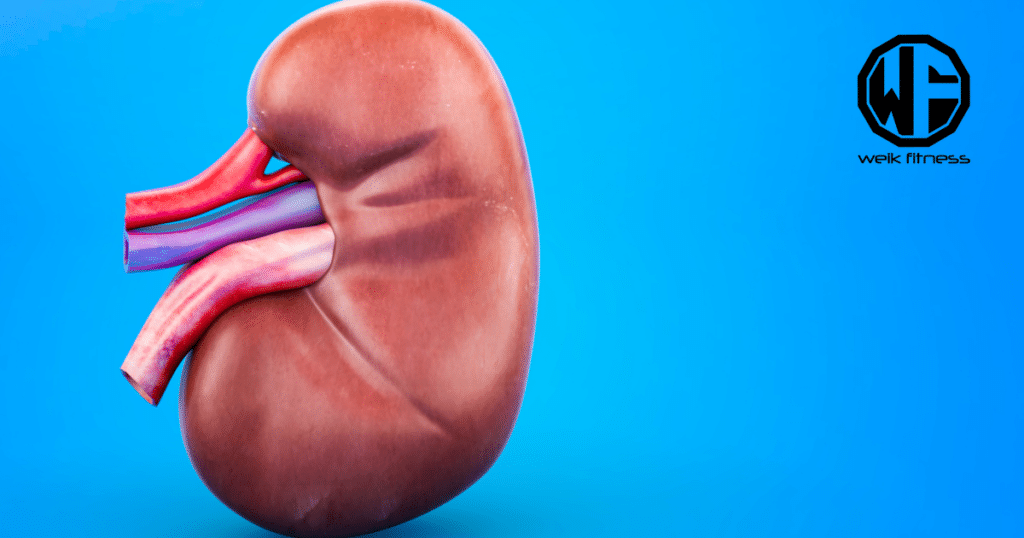
Sirtuins play a vital role in protecting your kidneys from damage — these proteins help fix injured cells and stop long-term kidney problems, making them an exciting target for new treatments.
1. SIRT1’s role in acute kidney injury
SIRT1 plays a vital role in protecting your kidneys during acute injury. Your kidneys need this protein to fight off damage from lack of blood flow or toxic substances. The protein acts like a shield by turning on genes that reduce swelling and cell death in kidney tissue.
Research shows SIRT1 helps your kidneys recover faster after injury. The protein boosts NAD+ levels in kidney cells, which speeds up healing. Medical studies prove that higher SIRT1 activity leads to better outcomes in acute kidney injury cases.
Your body’s natural repair systems work better with active SIRT1 proteins guarding kidney health.
2. SIRT3’s impact on chronic kidney disease
SIRT3 plays a vital role in protecting your kidneys from chronic disease. This mitochondrial sirtuin helps your cells fight oxidative stress and keeps your kidney tissue healthy. Your body needs SIRT3 to control inflammation and stop kidney scarring.
The nad-dependent SIRT3 guards against metabolic problems in kidney cells. Studies show that boosting SIRT3 levels can slow down kidney damage and improve cell function. Your mitochondria work better with active SIRT3, which stops harmful changes in kidney structure.
Sirtuins in Bone and Muscle Health

Sirtuins play a vital role in keeping your bones strong and muscles healthy through their direct effect on bone formation and muscle mass. Let’s dive in and learn how these amazing proteins can help you stay active and mobile as you age.
1. Role in osteoporosis prevention
Your bones need sirtuins to stay strong and fight osteoporosis. These proteins play a vital role in bone health by controlling how bone cells grow and work. SIRT1 helps make new bone cells and stops old ones from breaking down too fast.
Your body makes special cells called osteoblasts that build bones, and SIRT1 keeps these cells working well.
NAD+ levels in your body affect how well sirtuins protect your bones. Good NAD+ levels help sirtuins work better to keep your bones strong. Studies show that having more SIRT1 in bone cells leads to stronger, healthier bones.
Your bones stay stronger with active sirtuins, which help stop bone loss as you age. The right balance of these proteins keeps your skeleton healthy and cuts your risk of breaks.
2. Effects on skeletal muscle atrophy
Sirtuins play a vital role in protecting muscle mass during aging. SIRT1 acts as a key player in muscle health by turning on genes that stop muscle breakdown. These genes help build new muscle fibers and fix damaged ones.
The process works through NAD+ levels in muscle cells, which keep muscles strong and working well.
Muscle cells need SIRT3 to stay healthy and active. This special protein lives in the power plants (mitochondria) of muscle cells. It fights harmful substances that can hurt muscles and keeps energy levels high.
Studies show that more SIRT3 in muscles leads to better strength and less muscle loss as people age. The right mix of exercise and good food can boost sirtuin activity in muscles.
Sirtuin Modulators and Therapeutic Applications

Scientists now test natural compounds like resveratrol and NAD+ boosters as sirtuin activators to fight aging and disease.
1. Activators such as resveratrol and NAD+ boosters
Resveratrol and NAD+ boosters play vital roles in sirtuin activation. Resveratrol, found in red wine and grapes, turns on SIRT1 to boost cell health. NAD+ boosters like NMN and NR help your body make more NAD+, which sirtuins need to work well.
Your cells can get more power from these natural compounds. Taking 250-500mg of resveratrol each day helps fight aging signs. NAD+ levels drop by 50% between ages 20 and 50, so NAD+ boosters can help restore your youthful energy.
These compounds work best together to support your sirtuins and keep your cells strong.
2. Inhibitors and their clinical potential
Sirtuin inhibitors play a vital role in treating many health issues. These special compounds block sirtuins from working in your body’s cells. Scientists have found that nicotinamide stops sirtuin activity by sticking to specific spots in cells.
Your body needs the right balance of these proteins for good health. Too much sirtuin activity can lead to problems like cancer growth.
Medical experts now test different sirtuin blockers in labs. These tests show promise for fighting several diseases. Your doctor might soon use these drugs to help with cancer, brain problems, and blood sugar issues.
The key lies in finding blockers that target only harmful sirtuin activity. Your cells need some sirtuin action to stay healthy. Smart drug design focuses on this balance. NAD+ levels drop as you age, so doctors watch these numbers closely.
3. Future directions for sirtuin-targeting drugs
Scientists focus on creating new drugs that target sirtuins to fight aging and disease. NAD+ boosters show great promise in clinical trials as they help sirtuins work better in your body.
Small molecule drugs now aim to fix problems with type 2 diabetes, cancer, and brain diseases. Your genes play a key role — changes in the SIRT1 gene guide doctors to pick the right treatments for each person.
Drug makers now test NAD+ precursors like NMN and NR to boost your sirtuin activity. These compounds help your cells stay healthy as you age. The latest research points to mixing different sirtuin-targeting drugs for better results.
Your body’s NAD+ levels drop with age, so new drugs focus on keeping these levels up to help sirtuins work at their best.
Emerging Role of Sirtuin Research and Controversies

Scientists still have questions about how sirtuins work in different cells and tissues. New studies point to mixed results about sirtuin-based drugs for age-related diseases.
Unresolved questions about sirtuin functions
The role of sirtuins in stem cell function remains unclear. Many questions exist about how sirtuins affect cell growth and death in different body parts. Your body’s seven sirtuins work in complex ways that scientists still need to figure out.
More studies are needed on the exact ways sirtuins help with DNA repair and gene control.
Sirtuins affect your aging process through NAD+ pathways, but the full picture remains fuzzy. Your cells use sirtuins to control metabolism, yet their exact actions vary by tissue type.
The links between sirtuins and diseases like cancer create more puzzles. Research gaps exist in how sirtuins talk to other proteins in your cells. These gaps make it hard to create good sirtuin-based treatments.
Challenges in translating sirtuin biology to therapies
Scientists face tough hurdles in turning sirtuin research into real treatments. Mixed results show that compounds like resveratrol don’t always turn on sirtuins as expected. Each type of sirtuin (SIRT1-7) works differently in cells, making it hard to target them with drugs.
Your genes can affect how well sirtuin treatments might work for you — some people respond better than others due to their SIRT1 gene makeup.
NAD+ levels drop as you age, which makes it harder for sirtuins to work right in older people who need these treatments most. New research looks at ways to fix this with special molecules and miRNA treatments, but success rates vary.
Many sirtuin-based treatments still need more testing to prove they help with brain diseases. Your body’s complex response to these treatments makes it hard to predict if they’ll work for everyone.
The Benefits of Sirtuins in Aging and Age-Related Issues Are Clear

Sirtuins stand as vital guardians of your cellular health through their control of aging, metabolism, and disease prevention. Your body relies on these proteins to maintain key functions like DNA repair, stress response, and energy balance.
Research proves sirtuins’ power to fight age-related diseases, from Alzheimer’s to diabetes, through NAD+-dependent pathways. Modern medicine targets these amazing proteins to create better treatments for cancer, heart disease, and brain disorders.
Sirtuins FAQs
Sirtuins are proteins that help control aging and health. They work with NAD+ in our cells to keep our bodies healthy and fight diseases.
Sirtuins help slow down aging by fixing damaged cells and helping with stress. They turn genes on and off to keep our bodies working well as we get older.
These proteins help protect against many health problems like heart disease. They work in our cells to keep our bodies strong and healthy.
Scientists can now make drugs that activate sirtuins. These help with healthy aging and better cell function.
When sirtuins fail, people may face faster aging and more health problems. This can lead to issues with how cells make energy.
There are seven main sirtuins in mammals, named SIRT1 through SIRT7. Each type has special jobs in different parts of our cells.
Sirtuins Resources
- https://pmc.ncbi.nlm.nih.gov/articles/PMC11476333/
- https://www.nature.com/articles/s41392-022-01257-8
- https://pmc.ncbi.nlm.nih.gov/articles/PMC3522245/
- https://pmc.ncbi.nlm.nih.gov/articles/PMC6651129/
- https://www.sciencedirect.com/science/article/abs/pii/S0024320523008226
- https://pmc.ncbi.nlm.nih.gov/articles/PMC4872805/
- https://pmc.ncbi.nlm.nih.gov/articles/PMC4389911/
- https://pmc.ncbi.nlm.nih.gov/articles/PMC3245626/
- https://pmc.ncbi.nlm.nih.gov/articles/PMC5514220/
- https://www.sciencedirect.com/science/article/pii/S0092867406008920
- https://pmc.ncbi.nlm.nih.gov/articles/PMC6206880/
- https://pmc.ncbi.nlm.nih.gov/articles/PMC4745579/
- https://pmc.ncbi.nlm.nih.gov/articles/PMC8962665/
- https://www.researchgate.net/publication/368303824_Sirtuins_and_their_influence_on_autophagy
- https://pmc.ncbi.nlm.nih.gov/articles/PMC7712292/
- https://www.frontiersin.org/journals/oncology/articles/10.3389/fonc.2024.1384928/full
- https://pmc.ncbi.nlm.nih.gov/articles/PMC11519805/
- https://www.ahajournals.org/doi/10.1161/CIRCRESAHA.124.325440
- https://pmc.ncbi.nlm.nih.gov/articles/PMC5995322/
- https://pmc.ncbi.nlm.nih.gov/articles/PMC3837258/
- https://www.sciencedirect.com/science/article/abs/pii/S1568163724003635
- https://www.mdpi.com/1422-0067/20/5/1249
- https://www.frontiersin.org/journals/neuroscience/articles/10.3389/fnins.2020.00791/full
- https://pmc.ncbi.nlm.nih.gov/articles/PMC9830516/
- https://pmc.ncbi.nlm.nih.gov/articles/PMC6050939/
- https://pmc.ncbi.nlm.nih.gov/articles/PMC7555196/
- https://pmc.ncbi.nlm.nih.gov/articles/PMC9368634/
- https://pmc.ncbi.nlm.nih.gov/articles/PMC9478160/
- https://pmc.ncbi.nlm.nih.gov/articles/PMC5107309/
- https://pmc.ncbi.nlm.nih.gov/articles/PMC6342514/
- https://pubmed.ncbi.nlm.nih.gov/35583203/
- https://pmc.ncbi.nlm.nih.gov/articles/PMC4101544/
- https://pmc.ncbi.nlm.nih.gov/articles/PMC7390530/


*Disclosure: This article may contain affiliate links or ads, which means we earn a small commission at no extra cost to you if you make a purchase through these links. These commissions help support the operation and maintenance of our website, allowing us to continue producing free valuable content. Your support is genuinely appreciated, whether you choose to use our links or not. Thank you for being a part of our community and enjoying our content.
PLEASE CONSIDER SHARING THIS ON YOUR SOCIAL MEDIA TO HELP OTHERS LEARN MORE ABOUT THIS TOPIC.


